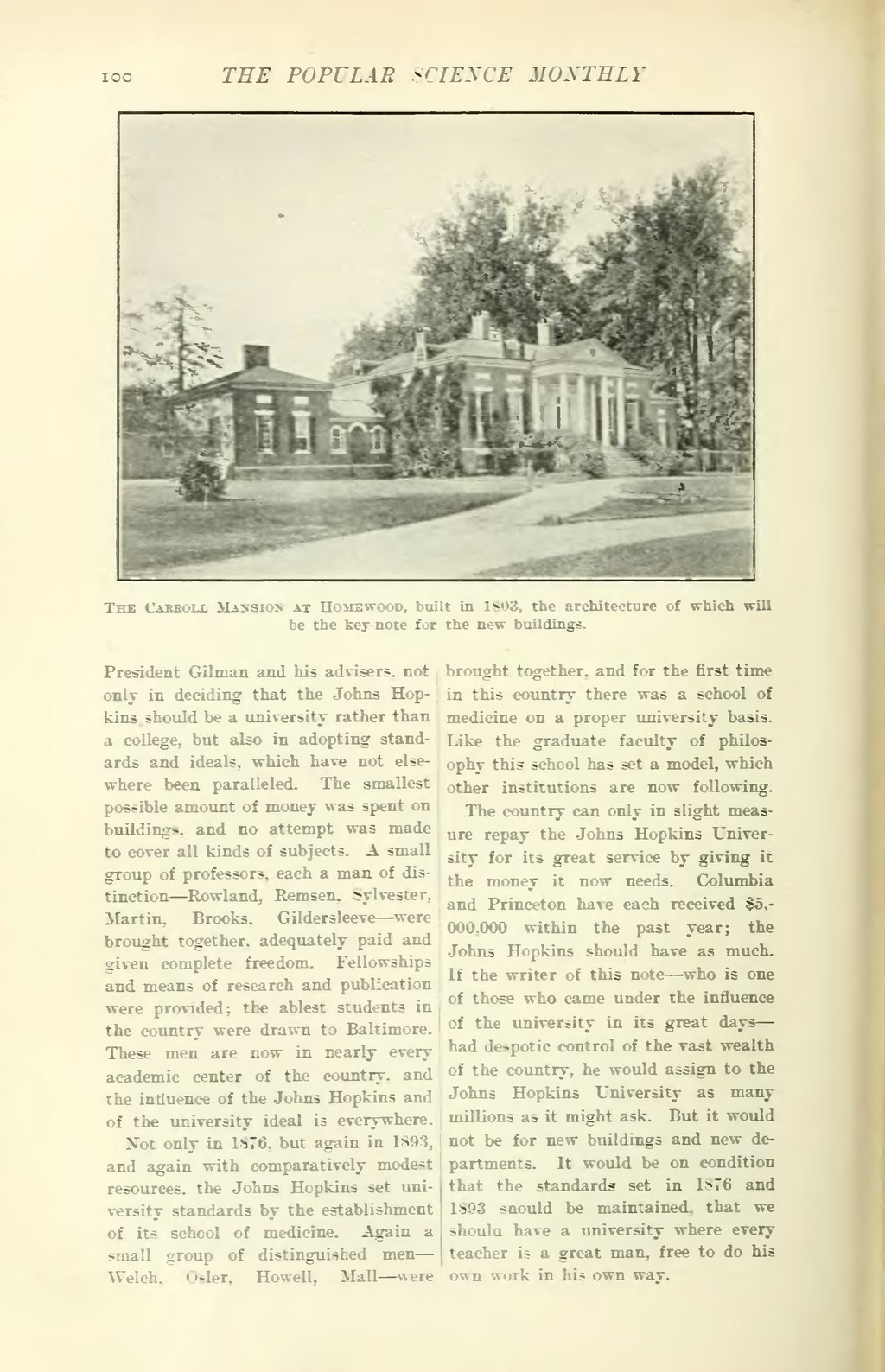
President Gilman and his advisers, not only in deciding that the Johns Hopkins should be a university rather than a college, but also in adopting standards and ideals, which have not elsewhere been paralleled. The smallest possible amount of money was spent on buildings, and no attempt was made to cover all kinds of subjects. A small group of professors, each a man of distinction—Rowland, Remsen, Sylvester, Martin, Brooks, Gildersleeve—were brought together, adequately paid and given complete freedom. Fellowships and means of research and publication were provided; the ablest students in the country were drawn to Baltimore. These men are now in nearly every academic center of the country, and the influence of the Johns Hopkins and of the university ideal is everywhere.
Not only in 1870, but again in 1893, and again with comparatively modest resources, the Johns Hopkins set university standards by the establishment of its school of medicine. Again a small group of distinguished men—Welch, Osier, Howell. Mall—were brought together, and for the first time in this country there was a school of medicine on a proper university basis. Like the graduate faculty of philosophy this school has set a model, which other institutions are now following.
The country can only in slight measure repay the Johns Hopkins University for its great service by giving it the money it now needs. Columbia and Princeton have each received $5,000,000 within the past year; the Johns Hopkins should have as much. If the writer of this note—who is one of those who came under the influence of the university in its great days—had despotic control of the vast wealth of the country, he would assign to the Johns Hopkins University as many millions as it might ask. But it would not be for new buildings and new departments. It would be on condition that the standards set in 1876 and 1893 should be maintained, that we should have a university where every teacher is a, great man, free to do his own work in his own way.
